Meta's new Touch Pro controllers come with many added features
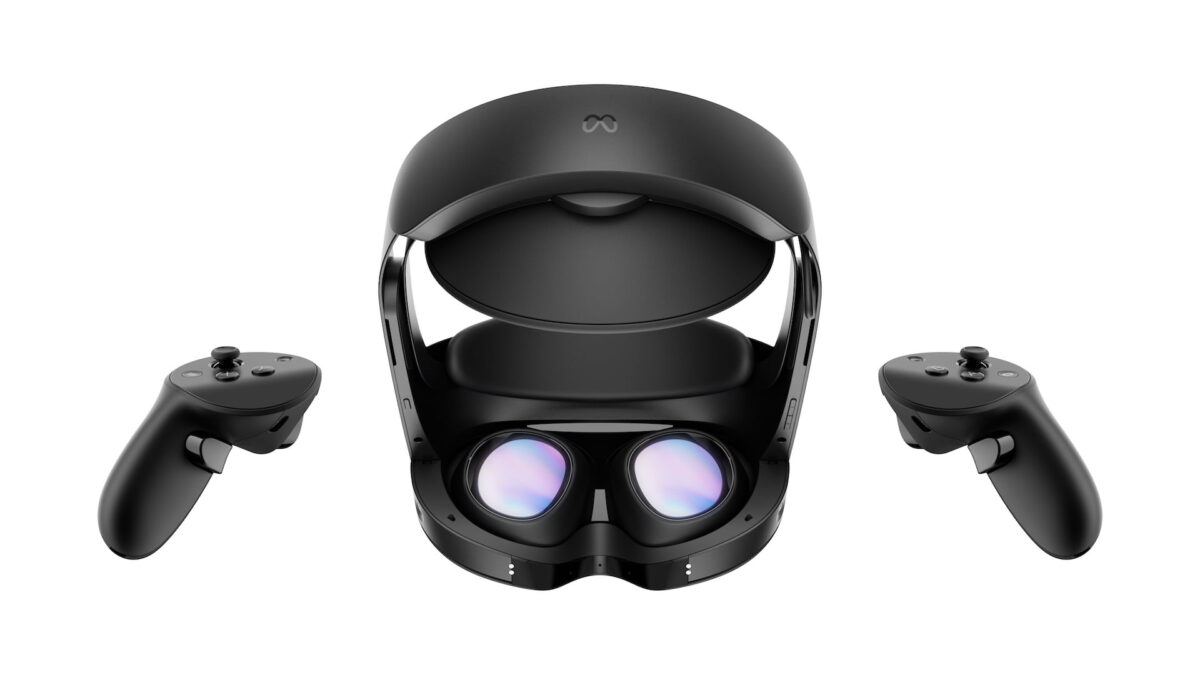
The Touch Pro controllers are available in a bundle with Meta Quest Pro or separately as an upgrade for Meta Quest 2. What improvements do they offer?
Meta calls the new input devices a "major upgrade" over the Meta Quest 2 touch controllers. Let's go through the specifications one by one.
Content
An integrated battery
The devices weigh 153 grams each and, unlike the Meta Quest 2's touch controllers, have an integrated rechargeable battery.
Instead of changing the batteries, you can easily charge the input devices with the included charging station. Also included with the Meta Quest Pro is a charging cable specifically for the controllers. If you buy the Touch Pro controllers separately, a mini charging station is included.
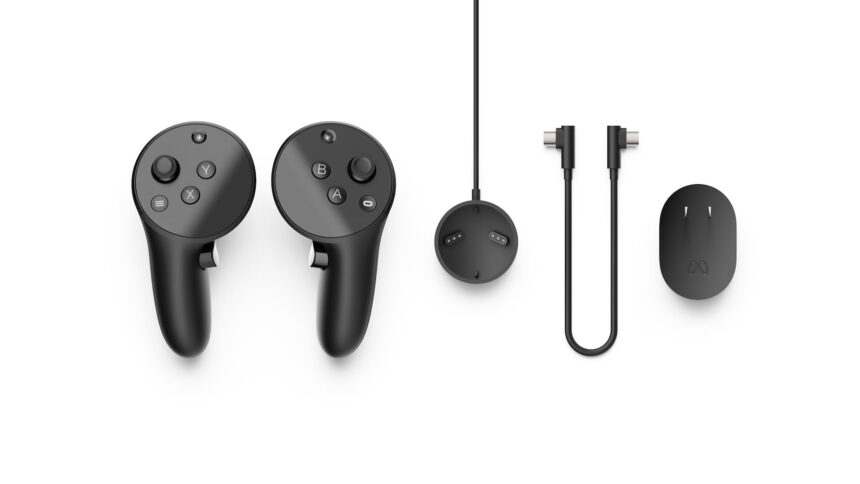
The accessories in the separate controller package.| Image: Meta
According to Meta, the input devices can last up to eight hours, depending on how intensively you use the controllers and with which VR apps. Twitter statements from John Carmack and Andrew Bosworth suggest a battery life of at least 4 hours.
VR controller with integrated tracking
The biggest innovation of the Touch Pro controllers is that they track themselves independently with three integrated cameras per device. A Snapdragon 662 chip is used for data processing. According to Meta, its CPU is up to 80 percent faster than that of a Meta Quest 1. The independent tracking also relieves the headset.
The fact that the Touch Pro controllers can locate themselves has three advantages: First, the controllers are spatially tracked even if they do not have visual contact with the sensors in the headset, for example behind the back or under a table.
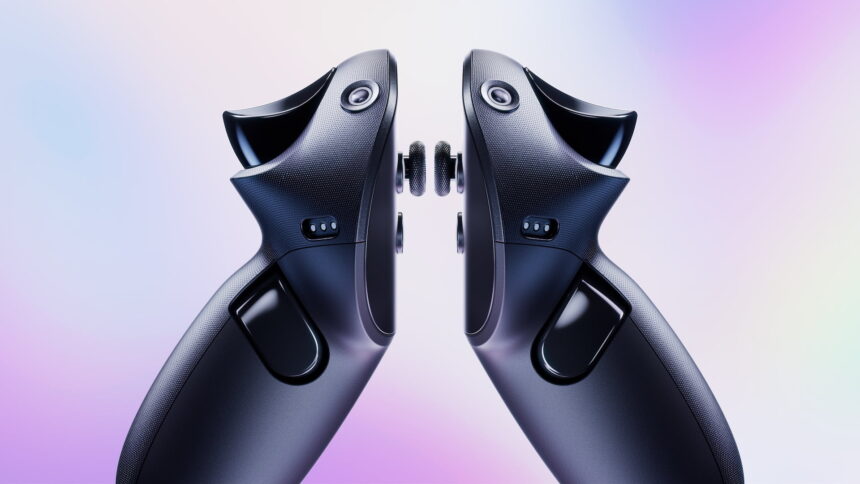
This picture shows one of the three cameras and the charging contacts. | Image: Meta
Second, they do not require tracking rings, which results in a better form factor. Also, they can be brought closer together without interfering with each other. This could enable new interactions, as developers no longer need to consider the physical distance between controllers.
The third advantage of self-tracking controllers is that it will be possible to use controllers and hand tracking simultaneously in the future.
More and more powerful haptic units
Another upgrade is the new haptic system, which Meta calls TruTouch Haptics. While previous touch controllers only integrated a single LRA (Linear Resonant Actuator) haptic unit per controller, the Touch Pro controllers offer an LRA unit for the trigger, a second LRA unit for the thumb rest, and a VCM (Voice Coil Motor) unit for the grip, for a total of three haptic units per controller.
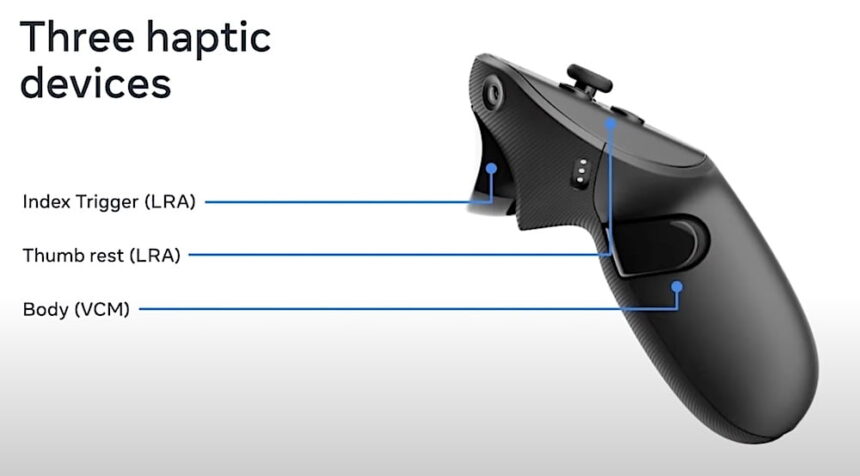
The three haptic units of the Touch Pro controllers. | Image: Meta
The two LRA units simulate haptics at specified locations, while the VCM unit is said by Meta to enable the "most complex and realistic effects" of any touch controller to date.
New sensors, new interactions
In addition to the dedicated haptics unit, the trigger button has received a new sensor that detects a flexing or sliding motion of the index finger.
The Touch Pro controller can detect how much the finger is bent before pressing the shutter button, and it can also detect a uniaxial sliding motion. The following video illustrates this.
The thumb rest of the Touch Pro controller is slightly beveled and has an additional sensor, just like the trigger: A pressure sensor that can measure a force of up to 6 Newtons.
With the trigger button sensor, the input device enables a natural and intuitive pinch/twist interaction by selectively bringing the thumb and index finger together. A second interaction is achieved by firmly pressing the thumb pad, which allows additional pressure to be applied to a virtual object to squeeze or break it, for example. Developers can use different degrees of up and down movement for their applications via an interface.
Using the Touch Pro controller as a VR pen
The wrist straps of the Touch Pro controllers can be removed and replaced with pen-like rubber tips. When you flip the input devices over, you can use the controllers like a pen to make sketches or write on a virtual whiteboard.
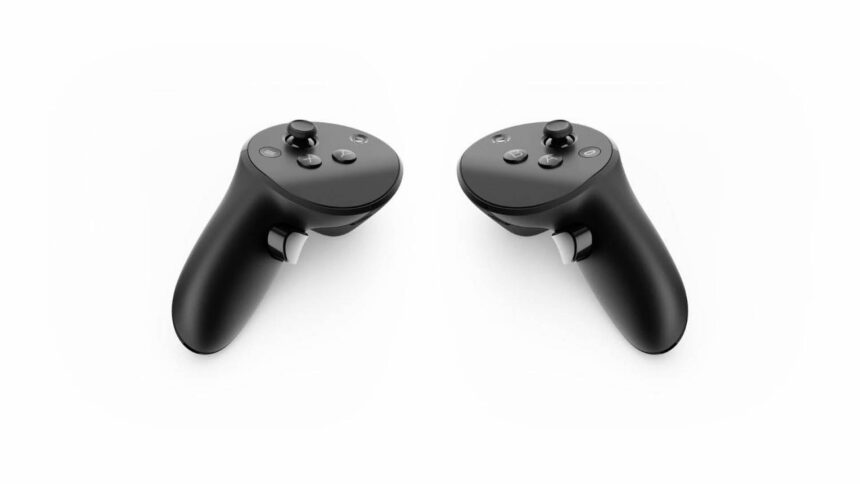
The Touch Pro controllers come without tracking rings and with a slanted thumb rest. | Image: Meta
A pressure sensor integrated at the end of the grips detects how hard you press against a physical surface or base, registering a force impact of up to 2 Newtons.
The separate Touch Pro controllers will go on sale in 2022, making them a potential controller upgrade for Meta Quest 2. The price for a pair is $299.
Following the unveiling of the Meta Quest Pro and Touch Pro controllers, Meta released a developer session in which the company went into detail about the technical innovations of the input devices. You can watch the clip in the following Youtube video.
Note: Links to online stores in articles can be so-called affiliate links. If you buy through this link, MIXED receives a commission from the provider. For you the price does not change.